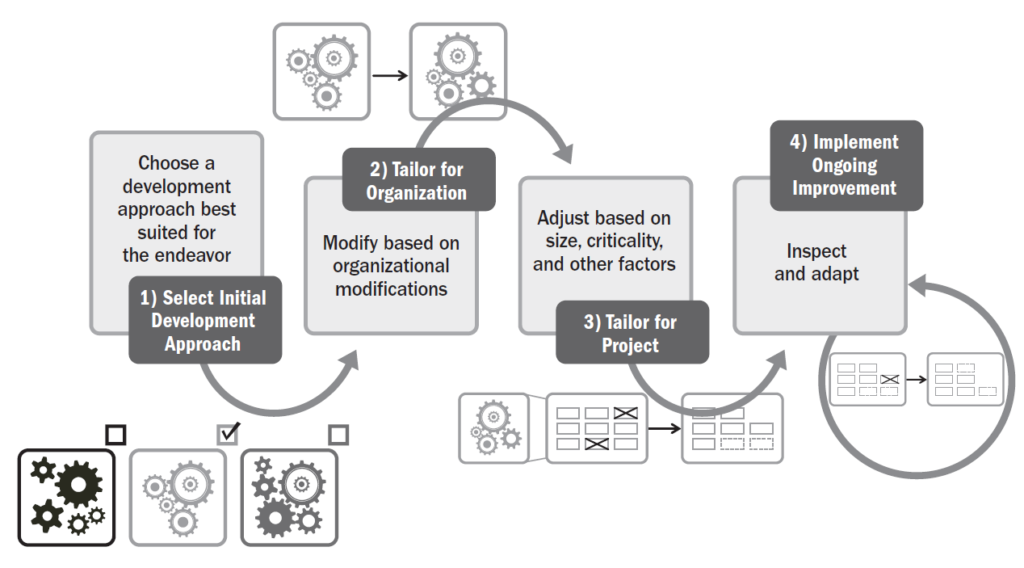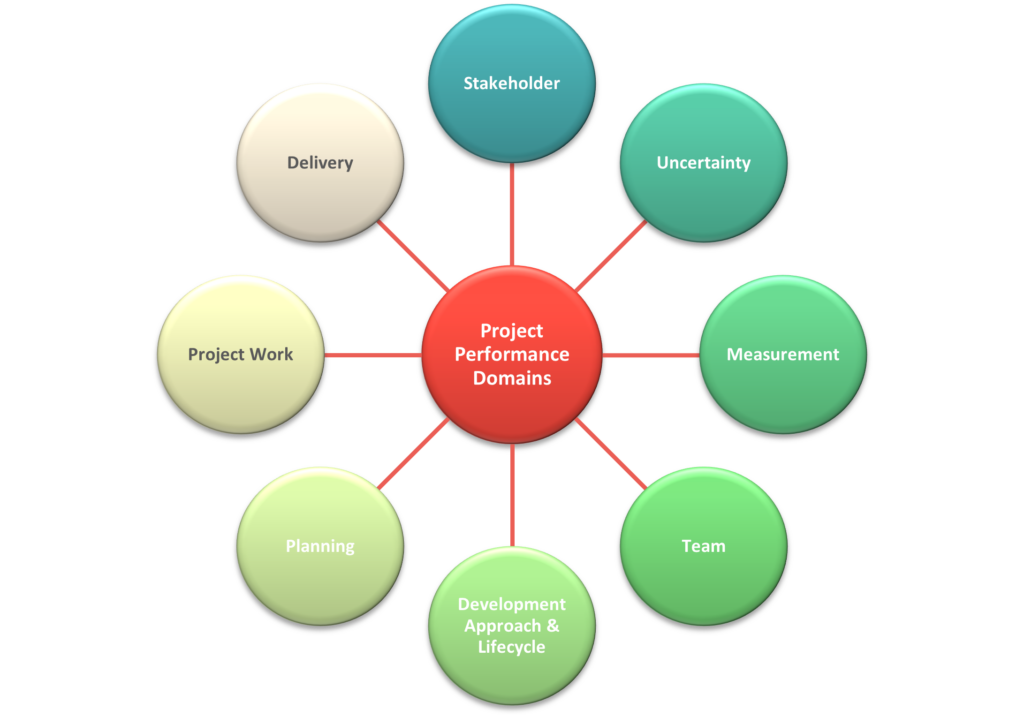Here is a detailed explanation of “Tailoring the Performance Domains” as per the PMBOK® Guide.
Tailoring the Performance Domains – PMBOK® Guide
Introduction
In the PMBOK® Guide Seventh Edition, project management shifts from a process-based focus to a principle- and performance-based framework. One of the key concepts introduced is the idea of tailoring the performance domains to suit the specific characteristics and context of a project. Tailoring is essential to ensure that project management efforts are fit-for-purpose, value-oriented, and contextually appropriate.
What is Tailoring?
Tailoring refers to the deliberate adaptation and customization of project management practices, tools, and techniques to best meet the unique needs of the project, organization, and environment.
According to PMI:
Tailoring means “determining the appropriate combination of processes, inputs, tools, techniques, outputs, and life cycle phases to manage a project.”
What are Performance Domains?
Performance domains are groups of related activities that are critical for effective project delivery. They are not isolated knowledge areas but interconnected elements that must be addressed to deliver value.
The Eight Performance Domains:
- Stakeholders
- Team
- Development Approach and Life Cycle
- Planning
- Project Work
- Delivery
- Measurement
- Uncertainty
Each domain contributes to delivering outcomes and achieving project success.
Why Tailor the Performance Domains?
Key Objectives of Tailoring:
- Ensure project relevance and effectiveness
- Promote value delivery
- Increase efficiency by avoiding unnecessary processes
- Align with organizational strategy and culture
- Respond to project complexity, risks, and dynamics
Tailoring allows the project team to apply just enough governance while maintaining the agility and flexibility required to succeed in changing environments.
Factors to Consider When Tailoring
- Project size and complexity
- Organizational maturity
- Stakeholder engagement needs
- Team structure and skill level
- Geographical distribution of team and stakeholders
- Compliance and regulatory requirements
- Available resources (time, budget, tools)
- Preferred development approach (Agile, Hybrid, Predictive)
Tailoring by Domain – Practical Examples
Performance Domain | Tailoring Example |
Stakeholders | In a community project, use direct outreach methods; in a corporate IT project, use dashboards and reports. |
Team | Use co-located Agile teams for software; use virtual collaboration tools for distributed teams. |
Development Approach & Life Cycle | Predictive for construction; Agile for SaaS; Hybrid for ERP implementation. |
Planning | Lean plans for fast-paced startups; detailed stage gates for public sector projects. |
Project Work | Use kanban boards for ongoing work; use detailed Gantt charts for fixed timelines. |
Delivery | Continuous delivery for DevOps projects; phased delivery for infrastructure builds. |
Measurement | Agile metrics (velocity, lead time) for iterative development; EVM for predictive projects. |
Uncertainty | Use risk registers in stable environments; build in response flexibility for innovation-driven projects. |
Tailoring in Practice – A Step-by-Step Approach
- Assess the Project Context
Evaluate internal and external factors that impact how the project should be managed.
- Analyze Each Performance Domain
Ask: What should be emphasized, minimized, or adapted in each domain?
- Customize the Project Management Approach
- Select tools, techniques, and governance levels appropriate to the project.
- Align the approach with stakeholder expectations and organizational values.
- Document the Tailoring Decisions
- Provide justifications for tailoring choices.
- Record lessons learned for future projects.
- Review and Refine
Continuously evaluate the effectiveness of the tailoring throughout the project life cycle.
Common Tailoring Pitfalls to Avoid
- Overcomplication – adding unnecessary processes or tools
- Underplanning – omitting important steps or domains
- Lack of stakeholder input – failing to align tailoring with stakeholder expectations
- Static tailoring – not adjusting the tailoring approach as the project evolves
Conclusion
Tailoring the performance domains is not about discarding standard practices, but about choosing the right mix to fit your project’s needs. When applied thoughtfully, tailoring helps maximize value, increase team efficiency, enhance stakeholder satisfaction, and improve the likelihood of project success.
The PMBOK® Guide encourages project teams to be flexible, adaptive, and principled—and tailoring is a key part of this modern project management approach.



